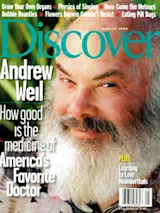The bubble is the Clark Kent of the natural world: mild-mannered and a bit of a wimp--until it strips for action. A preview of the awesome power of the seemingly innocent orb came in 1917 when English physicist Lord Rayleigh revealed how bubbles in ocean water cause the mysterious erosion of the metal in ship propellers. Today the bubble is being harnessed in a dazzling array of industrial and medical uses. Someday it may even help save your life.
Oil refiners employ bubbles in the removal of sulfur from crude. Bubbles are used in ink-jet printers to force inks through microscopic nozzles. Plastic surgeons use ultrasound to create bubbles that liquefy fat they wish to remove through liposuction. In the future, bubbles may sterilize surgical instruments and break up kidney stones. And some physicists speculate that the heat of bubbles targeted by sound waves is theoretically sufficient to trigger fusion, ...















